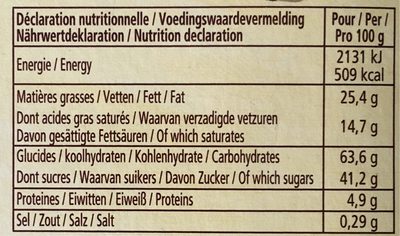Tea Time Edition Limitée - Delacre - 300 g
Important note: this product is no longer sold. The data is kept for reference only. This product does not appear in regular searches and is not taken into account for statistics.
Barcode: 3116430208446 (EAN / EAN-13)
Common name: Assortiment de 10 biscuits
Quantity: 300 g
Brands: Delacre
Categories: Snacks, Sweet snacks, Biscuits and cakes, Biscuits, Chocolate biscuits, fr:Assortiments de biscuits
Labels, certifications, awards:
Green Dot, Limited edition, Tidy man
Stores: Leclerc
Countries where sold: France










